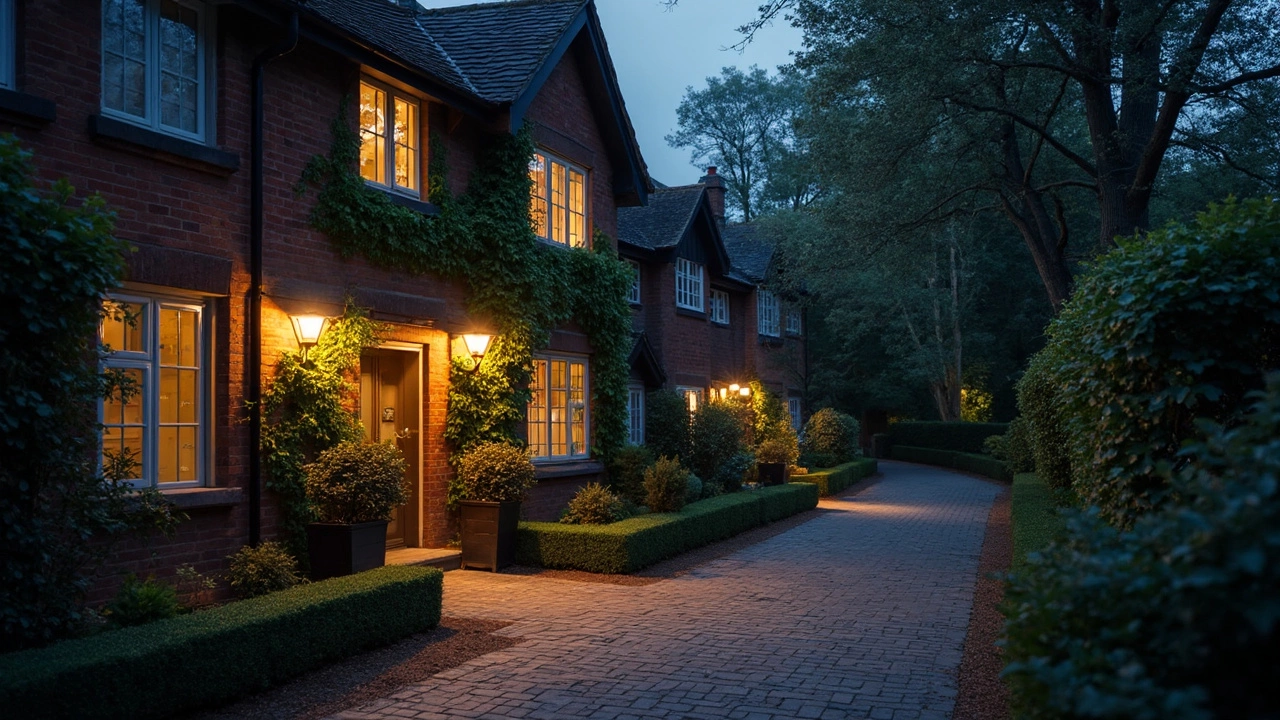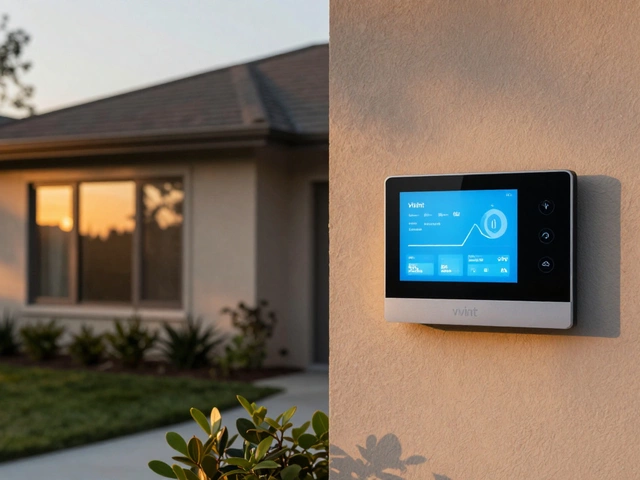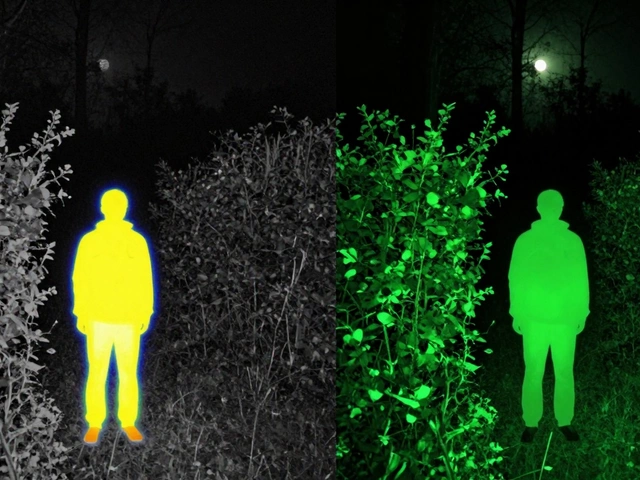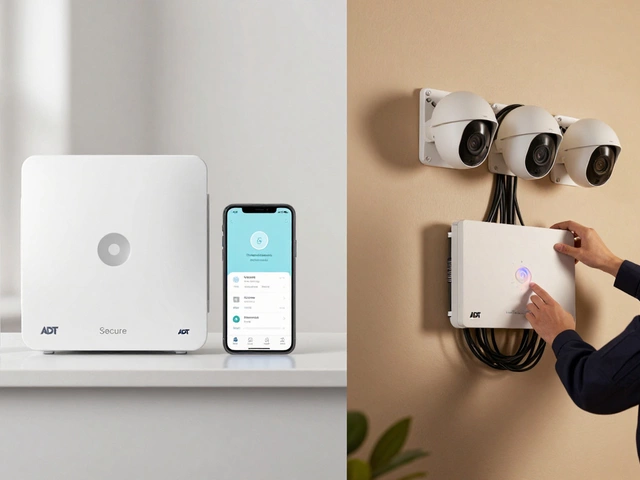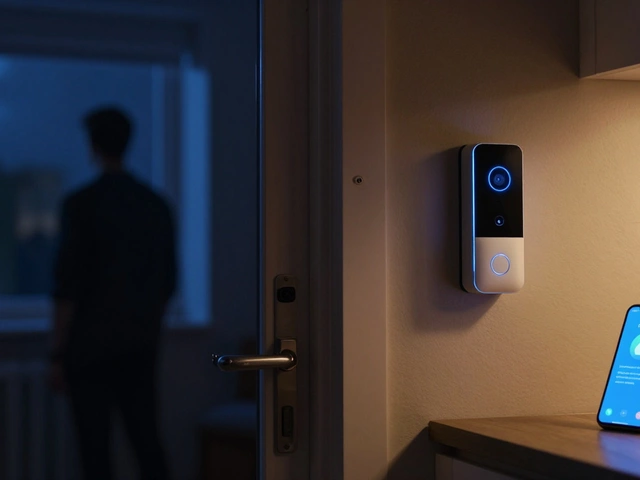Security lights are like the silent guardians of your home, keeping things safe and sound while you sleep. But where you place them can make all the difference. It's not just about throwing a light on and calling it a day—smart placement can really crank up their effectiveness and give you peace of mind.
Most folks might think sticking a light above the front door is all they need, but there's a lot more to it. Sure, illuminating main entry points like doors and windows is crucial since these are hotspots for potential break-ins. But what about those dark corners of your yard? Or the garage path you often neglect? These spots can be potential hiding places for intruders.
When setting up, think about areas that stay dark even when the streetlights are on. Light up those corners where burglars might lurk or shrub beds where shadows fall thickest. Aim for a setup that covers the pathways leading to your home too. Do it right, and you won’t just be lighting up your yard; you’ll be safeguarding your family's sense of security.
- Understanding the Importance of Placement
- Entry Points: Door and Window Lighting
- Backyard and Hidden Corners
- Pathways and Driveways
- Advanced Tips and Common Mistakes
Understanding the Importance of Placement
When it comes to setting up security lights, placement isn't just some minor detail—it's the whole game plan. If you get it right, you're not just putting a beam on your yard. You're using light as a tool, almost like having an extra pair of eyes watching out for you.
Why is placement such a big deal? Well, it’s all about where you want that light to hit. Anyone can set up a light, but ensuring it deters baddies and lights up critical zones is what you’re after. For instance, a poorly placed light can leave shadowy patches, which defeats the purpose. But when positioned right, it covers entrances, pathways, and little nooks that could otherwise invite trouble.
Entry Points: The Must-Haves
Your doors and windows are the prime spots. These entry points should always be in full view, preferably with motion-sensor lights. This not only scares off potential intruders but also alerts you whenever someone approaches—wanted or not.
Wide-Ranging Areas: Cover It All
A comprehensive approach means looking at the entire picture. This includes open areas like yards or gardens where an intruder could sneak in. Broad-beam lights tend to work wonders here. They cover more space and ensure there are minimal shadows.
- Positional Tip 1: Consider using a combo of floodlights and spotlighting for maximum effect.
- Positional Tip 2: Mount lights high for broader coverage but angle them down to reduce harsh glare that could annoy neighbors.
Understanding these nuances ensures you’re not just lighting up your home but actively securing it. It's all about merging smart technology with good, thoughtful placement, leveraging the full power of outdoor lighting to keep your family safe.
Entry Points: Door and Window Lighting
Let’s talk about the most basic yet crucial spots for security lights—your doors and windows. These entry points are prime targets for burglars, and keeping them well-lit is a proven way to deter potential break-ins. Now, where exactly should you position these lights?
Doors: Main and Side Entrances
For doors, especially your front and back entrances, consider placing lights directly above or beside the door frame. A motion-sensor light is a great option here as it can surprise and deter anyone trying to sneak in. Plus, it’s energy-efficient since it only activates when needed.
- Keep it high enough to avoid tampering but angle it downwards to cover the doorway adequately.
- For side doors or less-used entrances, ensure these are lit as well. Burglars often target these as they’re typically less visible.
Windows: Vulnerable but Overlooked
Windows, particularly those on the ground floor, are another vulnerable point. Lights positioned above or sited to shine directly onto them can keep would-be intruders clearly visible.
- Avoid creating too much glare. You want visibility, not a blinding spotlight that creates dark spots right under it.
- Remember those basement windows. They’re easily forgotten but can be a favorite entry for intruders.
Additional Tips for Effective Lighting
Think about combining your outdoor lighting with other security measures, like cameras. A lit entry point complemented by a camera can significantly boost your home security. Technology-wise, smart lighting systems allow you to control intensity and timing, adding more flexibility to your setup.
And hey, if you want some data to back this up: stats often indicate that homes without any home safety lighting are up to three times more likely to be targeted. So, a well-lit home isn’t just brighter—it’s smarter.
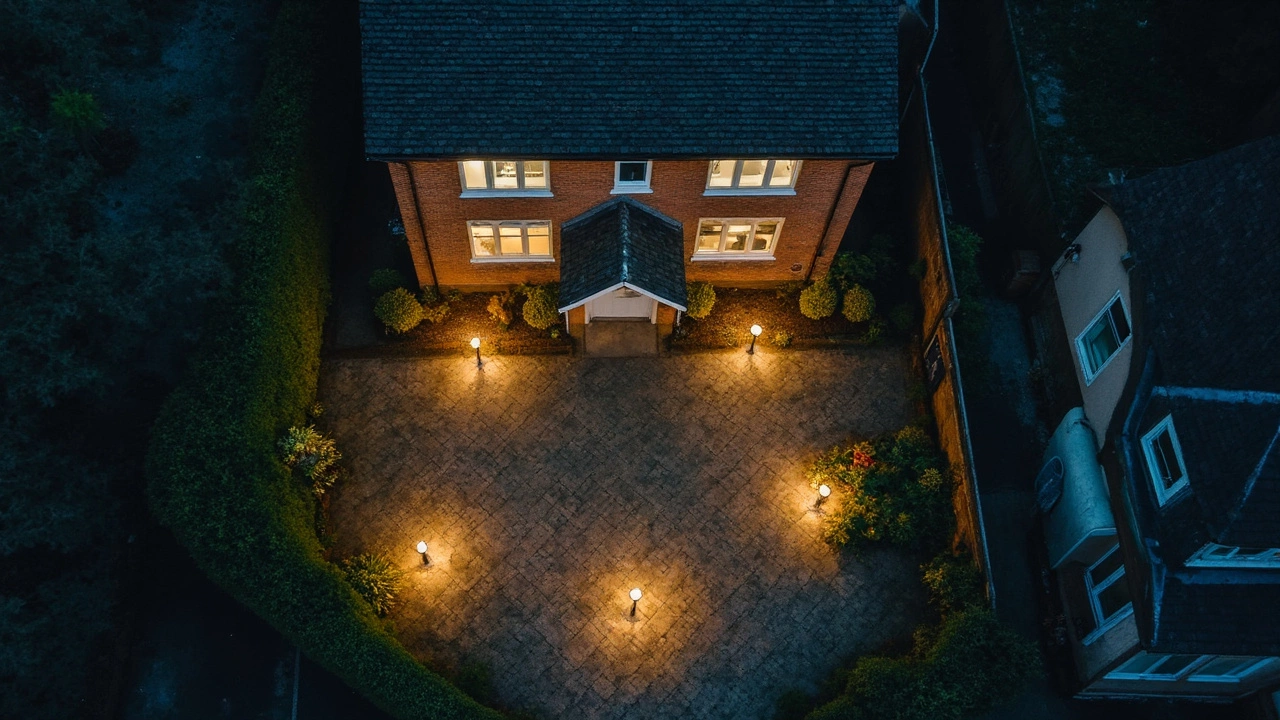
Backyard and Hidden Corners
Your backyard can be a cozy retreat during the day, but at night, those dark spots are just inviting trouble. Without the right lighting, security risks escalate since intruders love to hide in shadows.
First up, let's talk about outdoor lighting to brighten up those sneaky corners. It's essential because these areas often go unnoticed, offering a blind spot for unwanted guests. Lighting up these spots doesn't just keep away the creeps; it also makes these areas usable after the sun sets, extending your living space.
Spotlight on Key Zones
Think about placing lights near trees or large structures—these can easily cast sizable shadows at night. If you've got a shed or any high fence sections, install lights nearby. Motion sensor lights work wonders here, snapping on when something moves around.
According to Rick Spada, a renowned security consultant,
"A well-lit yard is like having an extra set of eyes at night, watching over the hidden and often forgotten corners of your property."This advice holds especially true for backyards with patio furniture or children's play areas. You want those spots lit, not just for safety, but so you can keep enjoying them after dark.
Going Green and Staying Bright
If you're worried about energy costs, solar-powered lights have come a long way. They're not only enviro-friendly but can save you some money. Plus, they don't require fancy wiring, which means you can install them pretty much anywhere.
Let's not forget proper installation height. A good rule of thumb is to position the lights about 9 to 10 feet high. This way, they cover more ground without creating harsh glare.
| Lighting Height | Area Coverage |
|---|---|
| 6-8 feet | Small Yard Areas |
| 9-10 feet | Medium to Large Yard Areas |
So, if you've got a dark yard, aim to light up all those tucked-away corners. Your backyard and its hidden areas are just as important as those front-facing spots.
Pathways and Driveways
Pathways and driveways are like the direct routes into your home’s heart, and they deserve the robust protection of security lights. But more than just thwarting potential break-ins, these lights also prevent you from tripping over a rogue skateboard left behind by your kids!
Why It Matters
Lighting these areas not only helps illuminate the way for you and your visitors but also acts as a beacon, deterring unwanted intruders from approaching your home unnoticed. A well-lit path gives a sense of welcome to your guests while simultaneously conveying a strong 'keep out' to potential intruders.
Smart Placement Tips
Aim to install lights at regular intervals along the path. This not only ensures consistent illumination but also helps avoid long shadows which can otherwise provide cover for lurking individuals. Consider using outdoor lighting that features motion sensors, as they help conserve energy and alert you when someone (or something) is on the move.
Choosing the Right Lights
LED lights are a great choice. They’re energy-efficient and often brighter than traditional bulbs. You can opt for wall-mounted fixtures to cover wider areas or low-voltage landscape lights for a more subtle touch.
Installation and Safety
Always ensure that the lights are installed at a height that makes them tamper-proof yet effective in spreading light. Keep wiring and cabling neat. If you're not a DIY enthusiast, hiring a professional for installation might be worth considering.
Interesting Fact
Did you know that homes with well-lit walkways and driveways are statistically less likely to be targeted by burglars? The consistent illumination serves as a big deterrent, just like having a vigilant night guard.
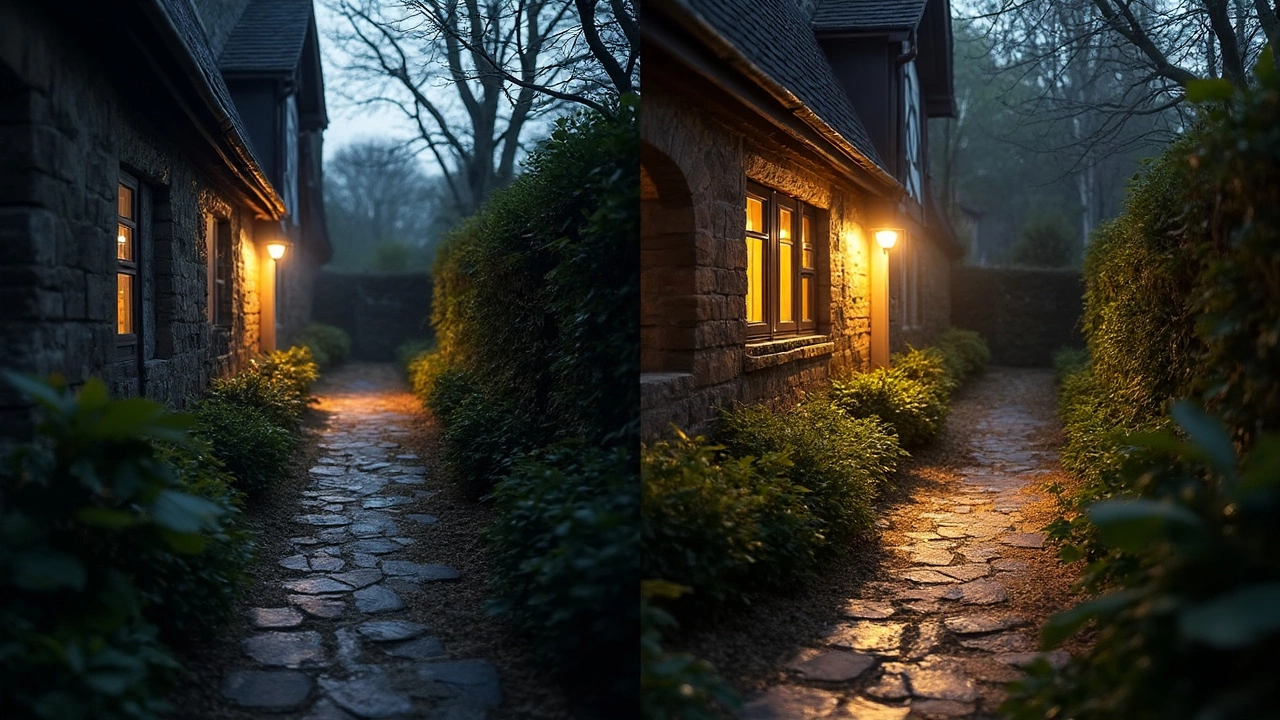
Advanced Tips and Common Mistakes
When setting up your security lights, it's easy to think more is better. But flooding your yard with lights can actually be counterproductive. So, what's the trick to getting it just right?
Smart Positioning and Angles
Haphazardly aiming lights can leave you with dark areas or unwanted glare. The goal is to achieve maximum visibility without blinding yourself or your neighbors. Angling lights downward at a 45-degree angle is often your best bet to cover more surface area while avoiding direct eye contact with the bulbs.
Mind the Neighbors
Be mindful of where your lights shine. While you want to secure your home, excessive lighting can become a nuisance to the people next door. Shield your fixtures or opt for motion-activated lights that only turn on when needed.
Avoid Overexposing
A common misstep is placing lights directly under or next to cameras. This setup can cause glare or wash out areas, making it harder to see. Instead, position lights at an angle or slightly off to the side for better footage.
Beware of Inconsistent Lighting
| Common Mistake | Why it’s a Problem |
|---|---|
| Random positioning | Leaves dark spots, creating entry points for intruders. |
| Overexposure | Obscures camera visibility with glare. |
| No lighting plan | Lacks strategic purpose, reducing overall effectiveness. |
Outdoor lighting serves two purposes: deterring potential threats and giving you a clearer view of your surroundings. A strategic plan saves you time and money while better protecting your home. Still not sure? You can always consult with a lighting expert to get tailored advice for your property!

